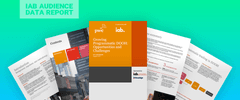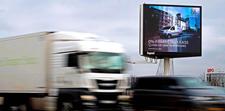When discussing out of home, we often hear about the difficulties of targeting. “I can serve my ad only to people who have dogs on Facebook, how can we possible target this accurately in digital out-of-home?” But is online data really that accurate?
According to Facebook, I am a huge Kardashians fan – including the whole Jenner crew. Well, I can tell you with certainty, I’m not. Do I occasionally land on one of their insta posts and have a giggle? Sure. Would I ever show real interest in their lives or buy one of their products? No.
This isn’t the only issue I’ve encountered with online data, and I’m sure you each have your own stories to share. So, this begs the question: why do brands seem to trust this data so much, but have so little trust in OOH data?
While you might open a link you weren’t that interested in and get retargeted for weeks, how often do you accidentally end up aspt a business you weren’t interested in? Most places we visit, we do so because of our needs and hobbies (or those of our loved ones). This makes locations strong indicators of the products and services we are actually interested in. And this is where digital out-of-home can play a significant factor in leveraging location data.
Marketing in the heart of a location
Of course, online audience data is not always wrong, and can indeed be a great way for brands to target their campaigns. But our online interests are often exaggerations of what we’re really in the market to purchase.
Think of how many automobile enthusiasts watch luxury car reviews on YouTube. An online campaign targeted to this audience can definitely reach a few potential buyers, but will likely be displayed largely to daydreaming gearheads.
Now think of the people who head to luxury car dealerships in their city. While the overall size of the audience might be smaller than the online campaign, they are definitely more likely to be influenced by a well-placed ad beside the dealership.
And this is exactly why DOOH is more than just the brand awareness channel it is often perceived as. At its core, DOOH is a location-based medium, with screens in malls, street corners, and convenience stores, right near the products they could potentially be advertising.
A DOOH campaign can easily be targeting using simple geofencing, only displaying the campaign in locations relevant to the audience and brand. This is how music brand, XITE, reached their audience during festival season in the Netherlands, displaying their campaign only in train stations near the festival venues.
DOOH location data is about more than longitude and latitude
Location data in DOOH is also more than just the proximity of a screen to a store. Working with third-party companies, DOOH publishers can use aggregated mobile and vehicle location data to gather behaviour patterns on travelled routes and popular destinations. With this, audience data and areas of interest can be extrapolated.
For example, a billboard on the side of a highway can use vehicle data to understand where cars are going to and coming from. At rush-hour, there might be many cars that head from the suburbs to park at an expensive lot in the heart of downtown – ideal placement for that luxury car ad. At other times, there might be a high percentage of cars heading to the mall midday – perhaps the right time to advertise Keeping Up with the Kardashians?
Ads can also be triggered using SDK data in the same way mobile campaigns are, only displaying if people with a specific interest are in the area. This is made especially possible with automated programmatic buying, as Pepsi MAX did with their recent campaign.
As part of their multichannel campaign, the brand retargeted fans who participated in taste tests at booths across the country. Rather than booking every mall screen, the digital out-of-home campaign was triggered only when one of these taste testers walked into the mall using SDK data.
Is more data better data?
At the end of the day, data is never wasted if used properly. Combining data sources provides a more complete view of the audience and lets brands better target their ads and better understand ROI. Location data is an important piece of the puzzle, and should definitely be considered when planning a marketing campaign.
Of course, convincing marketers that DOOH has targeting capabilities similar to that of online and mobile is still a bit of a hard sell. But this challenge is one that our industry has been tackling slowly but surely, and it’s only the beginning.
So if you are a brand or agency reading this, consider location targeted DOOH in your next campaign. Because remember, Facebook can only guess if a 40-year-old biker dude likes the Spice Girls… but his presence at one of their concerts tells a whole different story.
UPDATE! Kylie turned to DOOH
A week after this article was posted, Kylie Jenner and her crew launched the largest programmatic digital out-of-home campaign of all time with our DSP partner Adomni. Many of our publishers’ were included in the campaign, which was targeted to notorious US screens like Times Square and in the heart of Las Vegas.
Still not convinced? Here are 10 more reasons you should add digital out-of-home to your next campaign.








